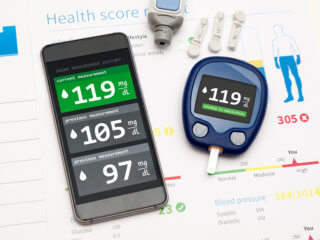Green hospitals concept will have a critical impact on the therapeutic process in time to come. Rather than being referred to like a place that provides only health care facilities, future hospitals will now aim at wellness and be changed into environment-friendly spaces to get well.
As hospital structure projects continue to develop and stay on a relentless uptrend, health care providers are progressively looking to present environment-friendly practices and green initiatives into the design, structure, and management of facilities. This is a move for sustainable health care facilities to reduce the carbon footprint of hospitals and the integration of modern “Green Building” design components into the environment to expand patient care and permit them to feel more at ease.
Ideas for sustainable hospitals
Jeff Hull with Idaho-based St. Luke’s Health System talks five steps the hospital design team undergo to develop sustainability of the new facility at St. Luke’s Magic Valley in Twin Falls, Idaho.
- Usage of existing materials before purchasing new ones.
- Installing “Green Space”: Introducing a hospital’s “green” initiative can spread awareness of ecological problems. For instance, establishing hospital’s rooftop gardens.
- Enhanced natural light: Jeff said, “And the more natural light you can get into space, the less generated light you need to produce.”
- Usage technology to curb energy use: Automated power system used with computers can reduce the consumption.
- Expand recycling plans: During the design process, the architects developed a construction waste management with a focus on recycling.
| Recommended for you | |
| Hospitals are becoming networks: Telemedicine | |
| Hygiene robots clean hospitals automatically | |
| Regulatory and policy framework for hospitals in India |
Best practices and key achievements
Undoubtedly, the expanding interest in green hospitals has prompted a growing number of global hospital partnership projects with a sustainability objective. A current example of this is GE Healthcare’s association with Asklepios Hospital Group, Germany to decrease the carbon footprint of a pilot hospital center situated in the city of Hamburg. Given a multi-dimensional approach, this joint venture expects to raise energy efficiency at the hospital by 30%, while in the meantime diminishing energy consumption by 30% and growing the extent of renewable in the energy blend by up to 30%.
Here are some other vibrant examples of most-environmentally-friendly-hospitals-in-the-world:
Children’s Hospital of Pittsburgh has the status of being among the first LEED-honored children hospitals around the globe. The facility is paperless with water efficient systems, better parking facility, excellent public transportation and recycling of water and materials.
Singapore’s Mount Elizabeth Novena Hospital is a best in a class health care facility that spans the line between hospital and hotel, has combined a series of environmentally friendly measure that led to it being granted the Singapore Building and Construction Authority’s Green Mark Platinum Award.
London’s Great Ormond Street Hospital is one of the world’s top children’s health care facilities. A $572 Million redevelopment to replace services incorporates a range of green features. These include a generator with waste heat recovery systems along with a ‘reversible’ under-floor warming system for temperature control. Together these will help reduce more than 20,000 tons of carbon emissions every year.
Doing things differently
Many newly built or modernized hospitals and facilities around the globe don’t just look after their patients, they watch out for the environment as well in many ways:
- High-efficiency water systems that afford savings of around 30 percent when measured along with proper drainage, for example, Low-flush toilets.
- Meeting power requirements with energy from renewable sources.
- Innovative ventilation system for recycling air inside the hospital.
- Occupant-sensing lighting systems with green roofs and on-site power plants.
- Paperless data management and record keeping.
- An energy-efficient system for chillers, boilers and insulation units.
- Installing Green Space in and around the facility.
These modern, state-of-the-art facilities features are keeping them apart and advance from typical health care facilities in the world.
Vision of the future green hospitals
Green hospitals are focused on moderating and securing current assets. This can be accomplished by continually evaluating and executing opportunities to enhance energy utilization and waste administration practices in a mindful, able, and practical way.
By setting expectations, sharing results and educating, the future hospitals can aspire to have sustainability and become a part of the great health care system in the world.
Other information resources
We have recognized many best practice possibilities for the health sector in conjunction to resource efficiency and cost savings. You can find some useful resources for the health care industry, based on the best practice Benchmarks, Best Practice Guides, Factsheets and Case Studies below:
Energy
Centre for the Analysis and Dissemination of Demonstrated Energy Technologies (Netherlands) Saving energy with Energy Efficiency in Hospitals
EPTA Ltd. (Greece) Guidelines for Energy Efficiency in Hospitals
Energy Star US – Saving Water and Energy Efficiency in Hospitals
USAID ECO3 Project Energy Efficiency In Hospitals: Best Practice Guide
Sustainability Energy Agency of Ireland (SEAI) Energy Efficiency Website for the Health Services
Water
Alliance for Water Efficiency Medical and Health Care Systems Introduction
Water UK Water Efficient Hospitals
South West Florida Water Management District Hospital Checklist
The Natural Edge Project (Australia) Water Savings in Hospitals
Resources
Magazine for Greening Hospitals Greenhealth Magazine
United Kingdom NHS Sustainable Development Unit
Unites States Environmental Protection Agency Partnership for Sustainable Healthcare
Practice Green Health Website for Environmental Solutions for the Healthcare Sector
Conclusion
As hospitals naturally use more resources and produce more carbon waste than large commercial buildings, the compelling deployment of environmentally driven strategies to improve resource management is of critical significance. We have outlined the different waste management and environment-friendly measure generated in hospitals, giving detailed information on the sources for each stream. How it can be reduced and what action can be taken to improve sustainability.
With a “healthy-imagination” vision for the future, the world must join on this journey to continuously develop innovations focused on reducing costs, increasing access and improving quality and efficiency of the health care facilities and systems.
Image credit: www.istockphoto.com

















